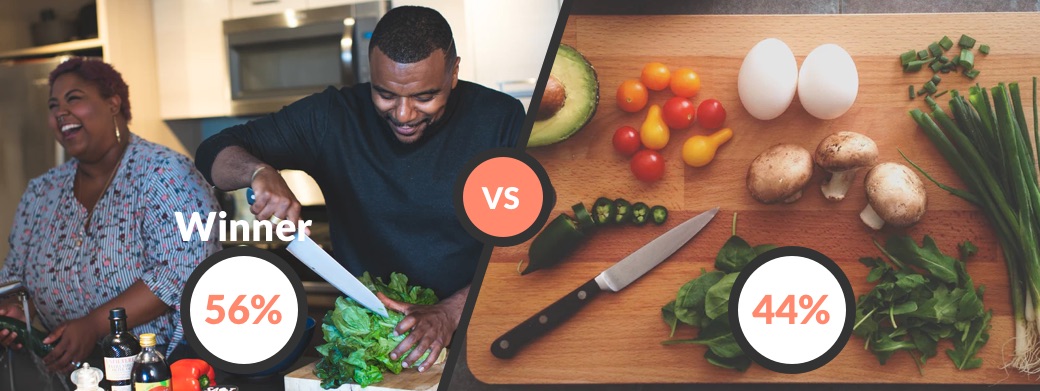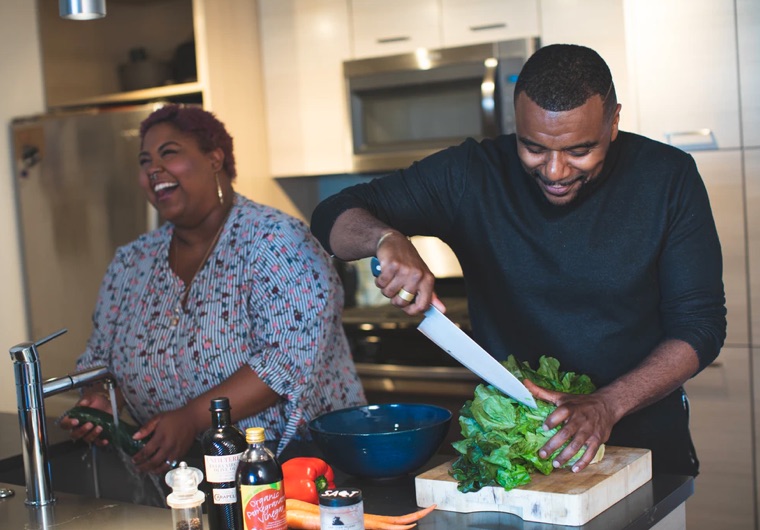
When it comes to telling a compelling story about your brand, the images you use to express the unique value your company provides plays a critical role. Brand imagery provides visual cues to help your customers interpret the usefulness of your business and understand how it might fit into their lives.
Your brand’s ability to use images effectively can have a big impact on a customer’s decision to engage with you.
It also means picking the right images to represent your brand can be a challenge.
When we work on brand imagery with businesses, we always start by building up themes and guidelines for imagery first. These guardrails aren’t based simply on the taste and preferences of those running the business, but on the needs and motivations of their customers.
When you discuss and document these ideas it creates a healthy separation between personal opinion and what’s best for the brand.
Guidelines also instill much needed consistency for the people who influence brand communication across all its channels. This includes the company’s website, social, ads, newsletters, and more.
But what sort of ideas should your guidelines cover when it comes to brand imagery?
The key areas we focus on are:
- How to convey the benefits your business provides to customers
- The tone that would best connect with your customers
- The emotion you want customers to feel when they engage with your brand
To make these ideas more tangible, we ran two surveys where we asked people for their preferences on images for some fictitious products.
In each survey, we asked the participants to look at two possible images for each product and select which they preferred and why.
Here are the surveys and percentage of votes for each.
As you go through, think about which images you would have selected and see how well it aligns with the responses.
Survey 1: Cooking Product
Survey Question:
Which of these two images do you prefer for a new product that encourages people to cook more at home?

Survey 2: Project Planning App
Survey Question:
Which of these two images do you prefer for a new online application that simplifies project planning?

Insights And Analysis From The Results
Insight #1: The best way to show the benefits of something is with people…usually.
We selected the images for the cooking product in part to test preferences for showing benefits through people versus objects alone.
The survey participants preferred the image with the couple cooking, but not by a huge margin.

The people who like the image with the couple, liked it for the reasons we would expect and said things like:
“It shows two people cooking & having fun while doing it. It would make me want to get in the kitchen and start cooking.”
“I feel that showing people, especially happy people, makes me want to try it.”
“I can feel like I am relating to it more, seeing the people excited and into it.”
“They look like they are having fun. It makes me want to cook with them!”
Not only do they understand what’s conveyed, they can imagine themselves participating.
That’s the main reason to use people in your brand imagery — it helps create a more concrete vision of what your customer’s life will be like as a result of your business.
But, the results also highlight a critical factor of this method.
If the actions aren’t clear, it may not connect.
Of the people who selected the image of the cutting board, 36% said the image of the people wasn’t as clear to them.

“The picture with the couple has a personal touch which is nice but it took me a second to realize they were cooking.”
“The picture with the couple is good but I don’t instantly take away cooking at home from it.”
“Though the couple picture feels homey and makes cooking look fun, I don’t know what they are selling.”
Another photo of people cooking more explicitly may have performed better.
Still, some people preferred the aesthetic of the chopped food on the cutting board. While slightly less popular it presented another way to communicate benefits around health and taste associated with cooking.
Insight #2: Organic imagery is more appealing than manicured stock imagery.
With the second set of photos, part of the intention was to test preference between a more natural looking image (the two women) versus a highly stylized shot (the individual woman).
In our brand strategy work, we almost always recommend using organic, natural photos for a couple key reasons:
- It’s easier to imagine yourself in a scenario that has some connection to your reality. A pristine desk with a perfectly placed coffee cup, pen, and vase looks more like an art installation than an actual office.
- Consumers are so savvy now that when they sense images that are stock, they’re triggered to assume they’re ads and are more likely to ignore them.
Here are some comments on the image with the two women:

“This image contains an appropriate amount of contrast and just seems more realistic. It shows two people together in a recognizable scene.”
“The image with the two women makes it feel like a more realistic situation, with people working together and discussing. The other image has more of that generic stock photo feel.”
“The two women look professional and it is an appealing picture with the background, plants, wooden floor, etc!”
Interestingly, while the stock image of the individual woman wasn’t preferred there was a recurring theme of liking the simplicity of it from those that selected it.

“The individual woman is better because it is simpler than the other and makes me think more about simplification.”
“If you are trying to simplify something then the minimalist look of this option makes more sense.”
“I prefer this one because there’s less going on which makes me think it’s simpler.”
So, again while this was only selected by 28% of the group there’s still a helpful lesson that could help influence future image selections.
Insight #3: People can create meaningful stories in their minds simply based on the emotion expressed in an image.
One of the most interesting takeaways from the survey responses were the stories they could extract from a single image.
Here are some highlights from the couple cooking:
“I think people want the closeness of making something that their family will enjoy.”
“Seeing people cook is what would make me what to go cook more for my family.”
“The individuals look like they are having fun. And, they don’t look like chefs, but rather any normal person working their way through a recipe.”
“They both are smiling and appear to be enjoying themselves a lot. Makes me feel like joining them.”
That one image helped people imagine families cooking together — and cooking for their own family. They also felt a connection that you don’t have to be a professional chef to enjoy cooking.
That’s a great demonstration of the power of storytelling through imagery. It gets your customers thinking not just about a product, but about how their lives might improve through your brand.
Insight #4: Segments within your audience may have different imagery preferences.
While the overall split on the cooking images was 56% in favor of the couple, the breakout by gender of survey participants tells a more specific story.
- Female: 76% selected the couple image, 24% selected the cutting board
- Male: 36% selected the couple image, 64% selected the cutting board
If this fictional company was targeting women primarily, then the couple image would be the runaway winner. On the flip side, if men were the target it may be good to explore more functional images.
Every business has variances within its audience. Your job is to understand those nuances and know how they affect your marketing efforts.
You Have To Test With Your Audience
As you work to craft the guidelines for your brand’s imagery, you need to factor in many inputs. What’s the best way to show the benefits you offer? How do your customers like to communicate? What will evoke a positive emotional response from them?
There are definitely best practices that can help inform your direction. But you also have to test and listen to ensure that your guidelines stay aligned with your specific audience as your brand evolves.
If your brand is thoughtful about its use of imagery, it can be an incredible tool to make strong impressions with new customers and reinforce relationships over time.

Get Help Crafting The Guidelines For Your Brand
If you’re ready to build stronger connections with your customers, reach out for a free consultation. We’ll help you transform your best business thinking into an actionable, shareable, growth-oriented guide. Click below to learn more about the Brand Guidebook process.

